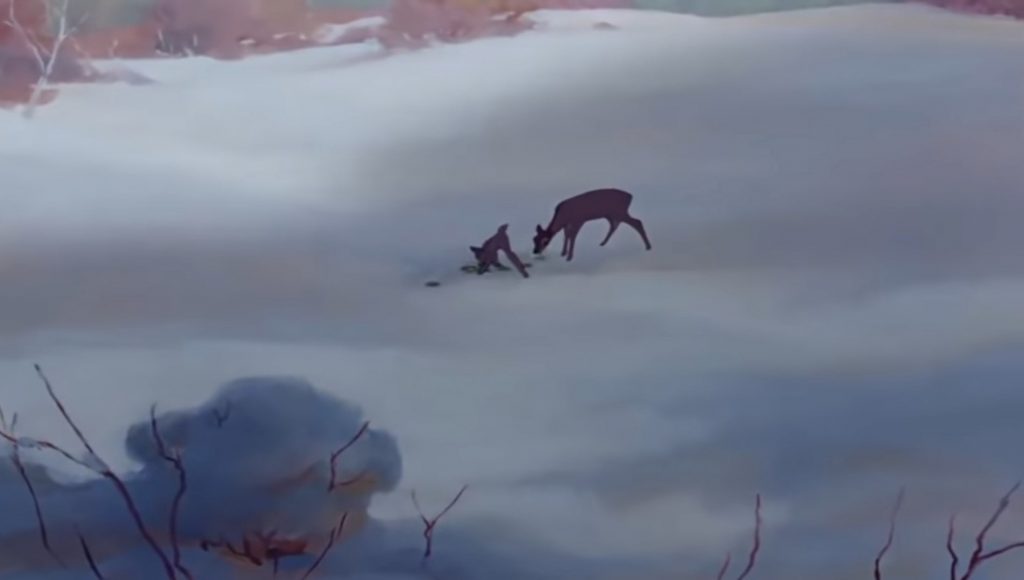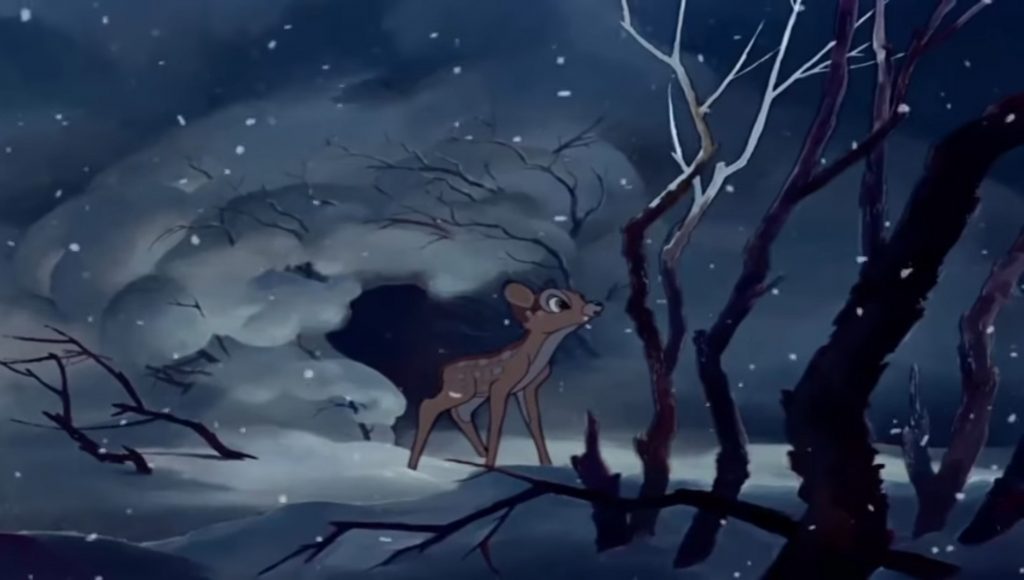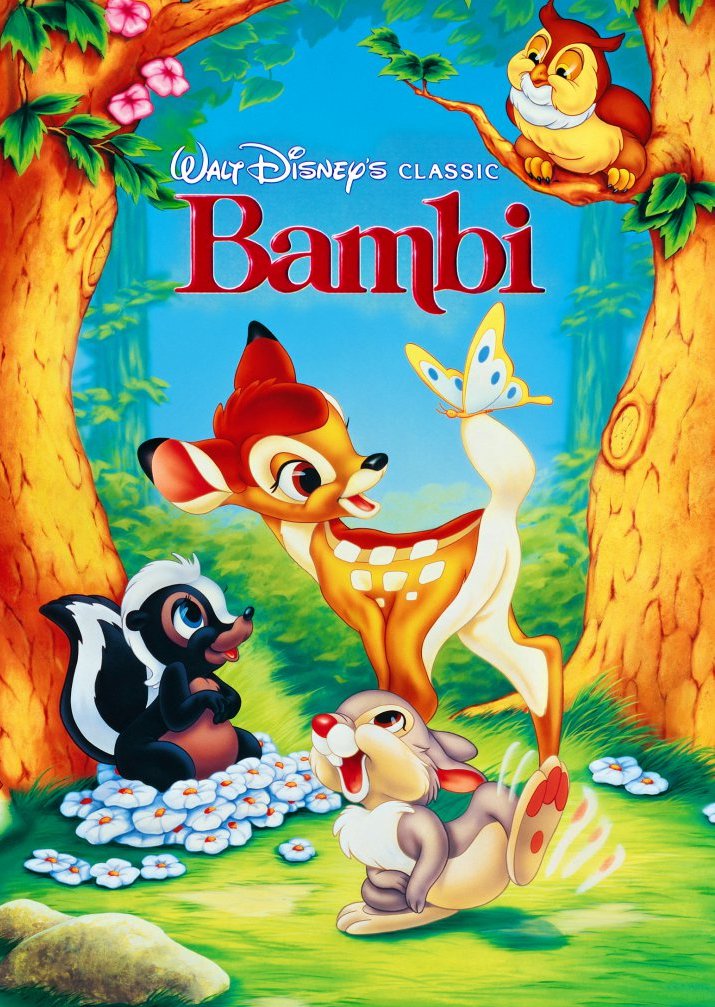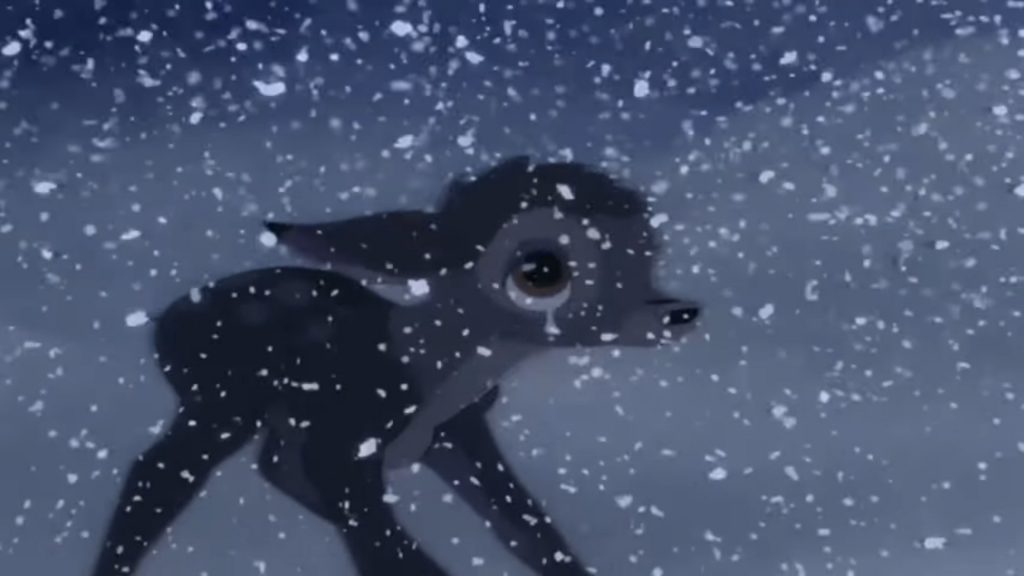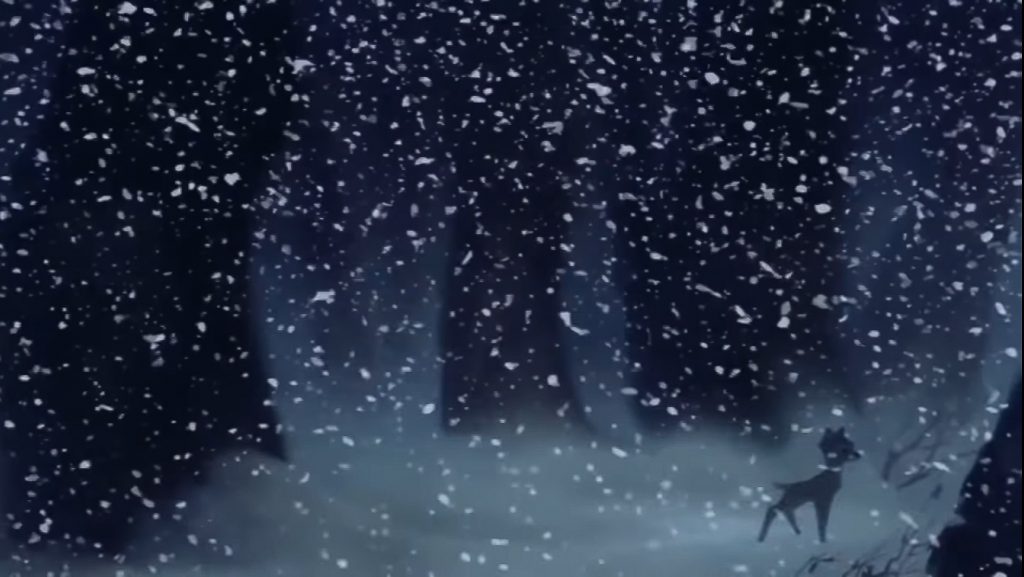The story of Bambi has captured the hearts of many ever since its release back in 1942. The main character, Bambi is a sweet, newborn mule deer when he first graces the screen, and earns the love of many with the lovely antics shared by him and his friends. The most memorable scene however, is the tragic death of his mother at the hands of humans.
Winter is first pictured as something of an amusement to the audience and the characters, with a scene featuring Bambi and his rabbit friend Thumper enjoying the fun of sliding on ice. However, as the movie progresses the film begins to picture winter in a very contrasting image; winter is one of the hardest times animals need to go through, with the lack of food being an obstacle to many struggling to survive. The scene does not emphasize the hardships Bambi and his mother face, but their expression and actions shows the harshness of winter towards wild animals, and their desperation to survive the cold.
The camera however, does not pan out too much, and in fact zooms back in the moment Bambi’s mother raises her head. We witness the mother deer quickly surveying the surroundings, ears angled to take in sounds from all directions before calmly ushering Bambi to run for the thicket. The silence is broken by a swell of music and brass instruments as the two begin to run, the music helping to build up the tension in that moment as the deer attempt to escape. The camera alternates between showing us Bambi and his mother, the mother being the only one speaking in between gunshots. However, at a final gunshot, the music falls into silence, and we witness Bambi reach the thicket. The silence prompts the viewer’s response of outrage and shock towards the hinted death of Bambi’s mother;to some extent the sound direction helps shape an emotional and perhaps even moral response from the audience.The mise-en-scene of the scene begins with a single patch of grass pictured out on the open meadow, the tiny flash of green across the vast land covered in snow. The two deer are pictured alone, with Bambi’s mother beckoning her child to help himself to grass. Bambi is eager to feast on the tiny patch of green grass, the mother more slowly joining. This scene implies the difficulty they have had in searching for food; the obvious joy of the mother and the ravenous eating of Bambi hints to them having not found proper nourishment in a period of time. As the camera pans out while the two deer eat, the audience is shown just how large the meadow is, as well as how vulnerable the two deer are when situated in a snow-covered open meadow. This once again reminds us of how desperate the two deer are for food, for subjecting themselves to vulnerable conditions just to find food.
Upon finally reaching the thicket, Bambi calls out for his mother only to realize she is no longer by his side. By filming Bambi’s point of view in the thicket, it further contributes to the emotional intensity of the scene. He desperately calls out for her as snow falls around him, the cruel, harsh winter making the scene more sorrowful as Bambi finally runs into his father. At his father’s informing of his mother’s tragic death, Bambi’s tears fall as he follows his father.
Being one of the most famous scenes in cinematic history, this is one of the first attempts to display the concept of parental death to children. What makes this scene more interesting is the anthropomorphism thrust upon the two deer. While their behavior is still very deer-like, their speech and emotion however, is not. In the scene, the fear for the two deer is conveyed through Bambi’s mother’s desperate shouts for Bambi to run, as well as the erratic changes of camera angles between the two characters as they run through the snow. Also, after Bambi reaches safety, it is his desperate calls for his mother and tears that make one’s heart wrench for the child that had his mother killed right before him.
Does anthropomorphism have to be featured in order to stimulate the emotions of the audience? Perhaps the audience wouldn’t have reacted in the way intended had the two deer never spoken; anthropomorphism may have been the only way to help its target audience: children understand the tragedy. But even for an adult, the dialogue is probably what helped make the scene all the more powerful and heart-wrenching. It is perhaps in this way, that anthropomorphism is truly unavoidable for one to feature in an animated animal film.
